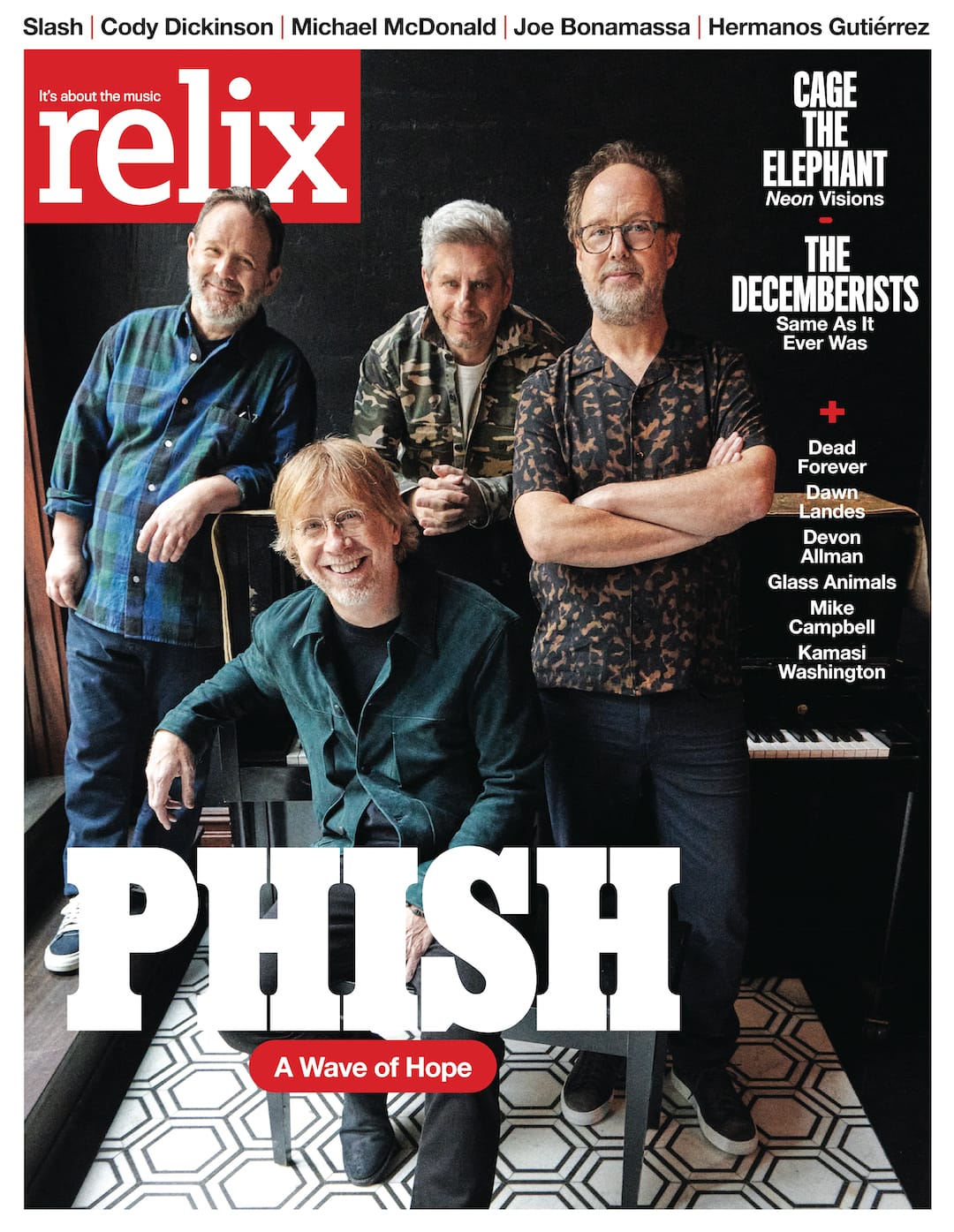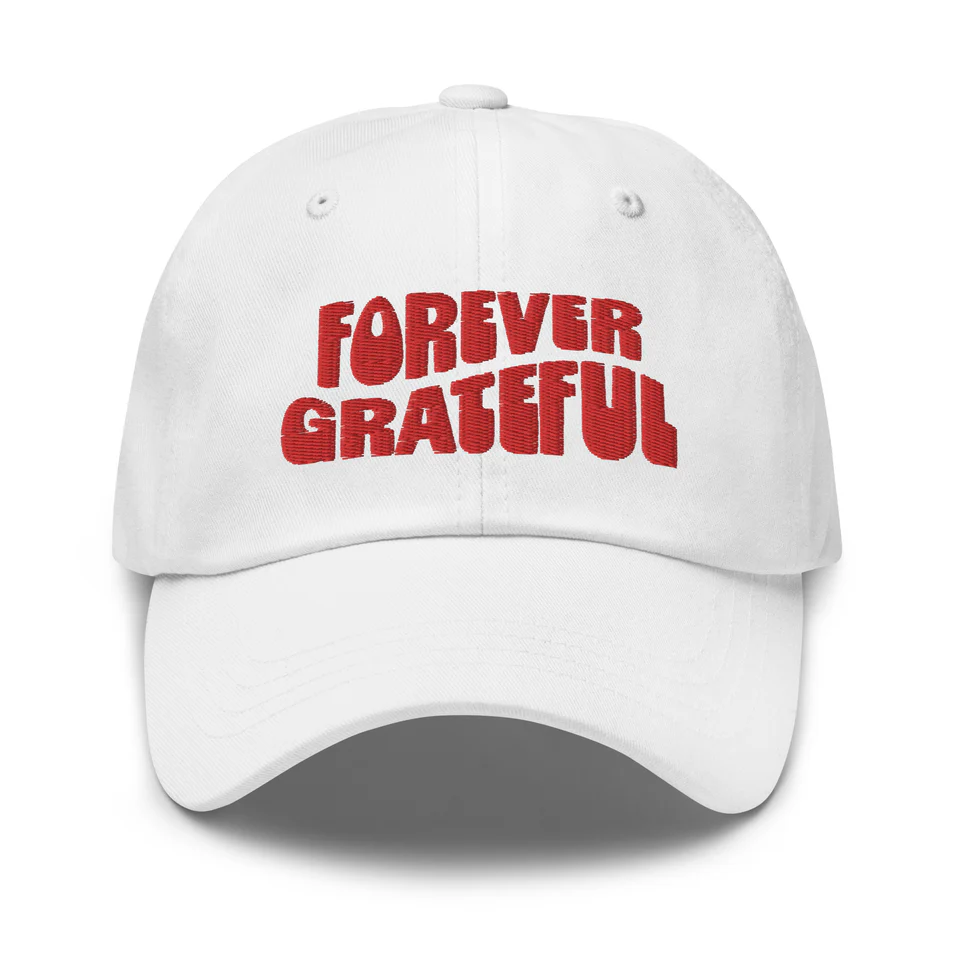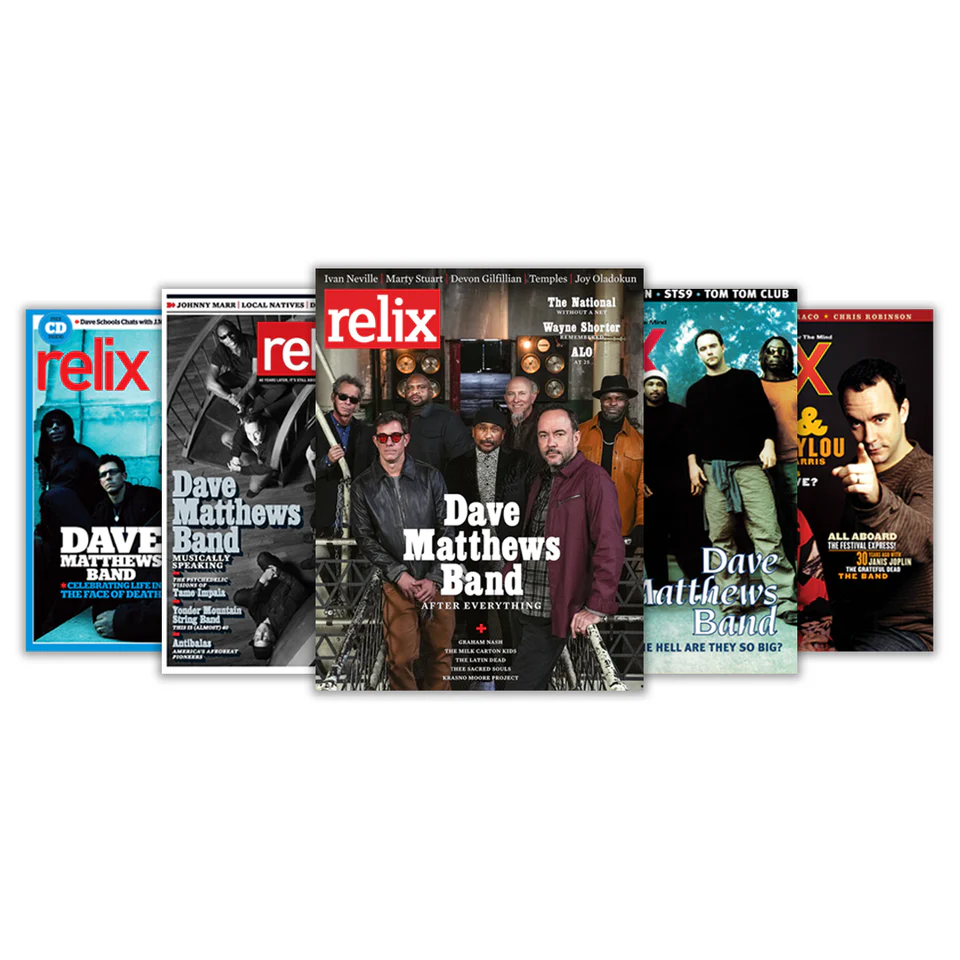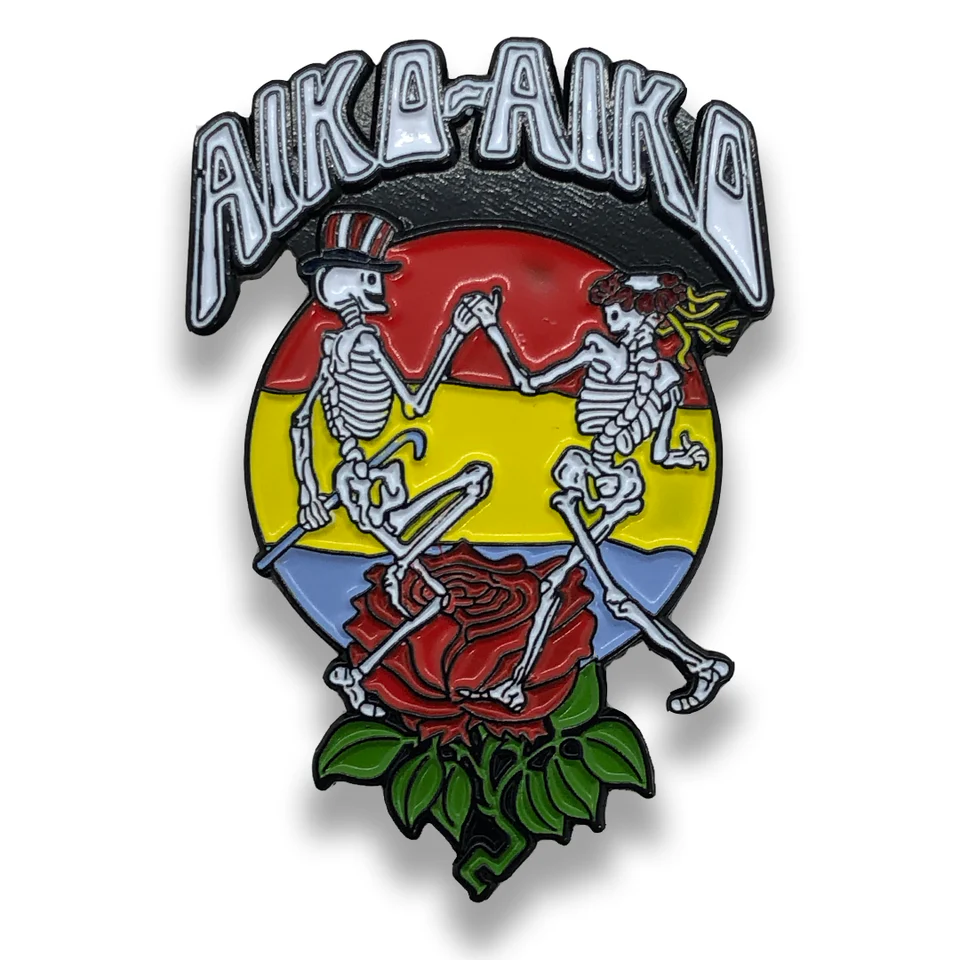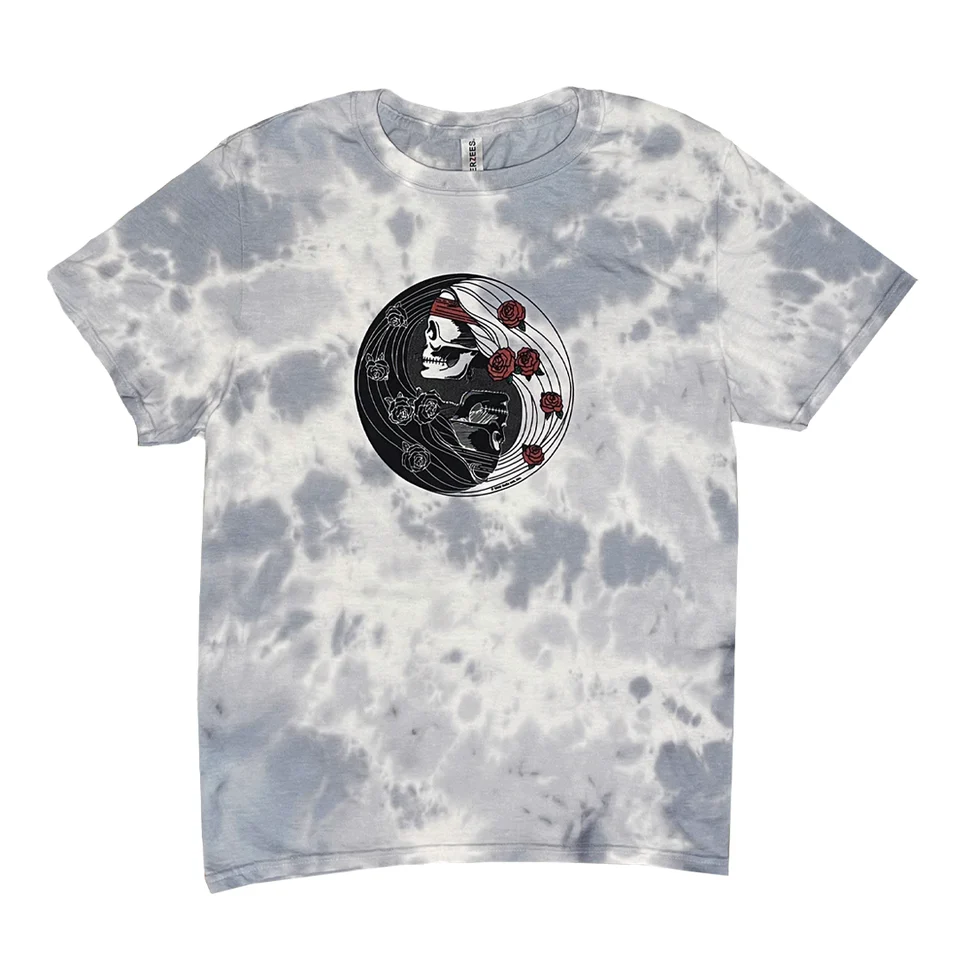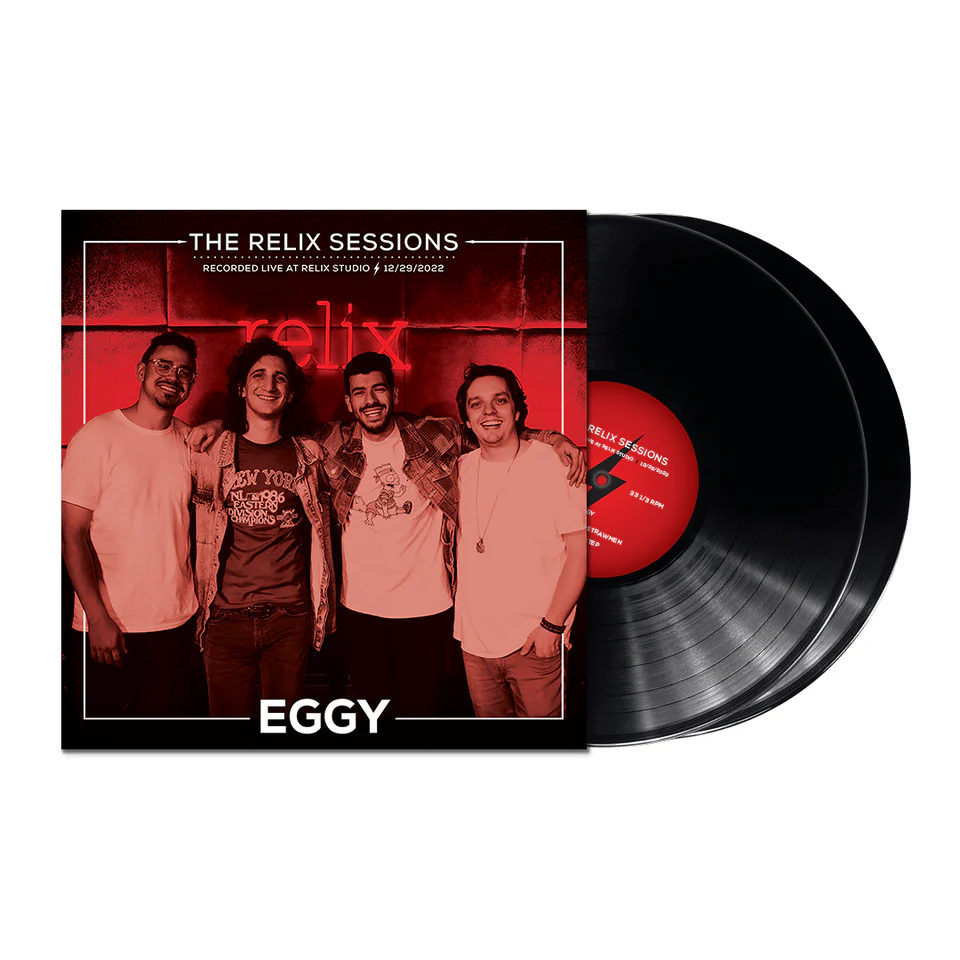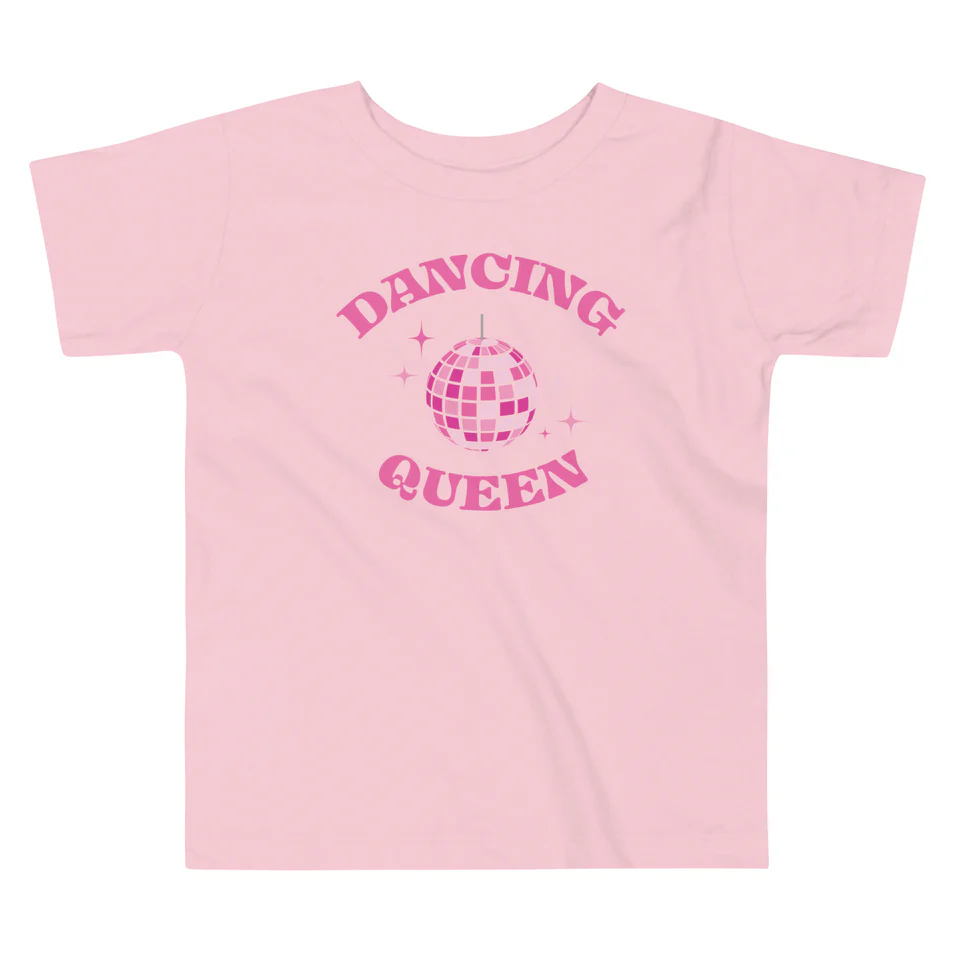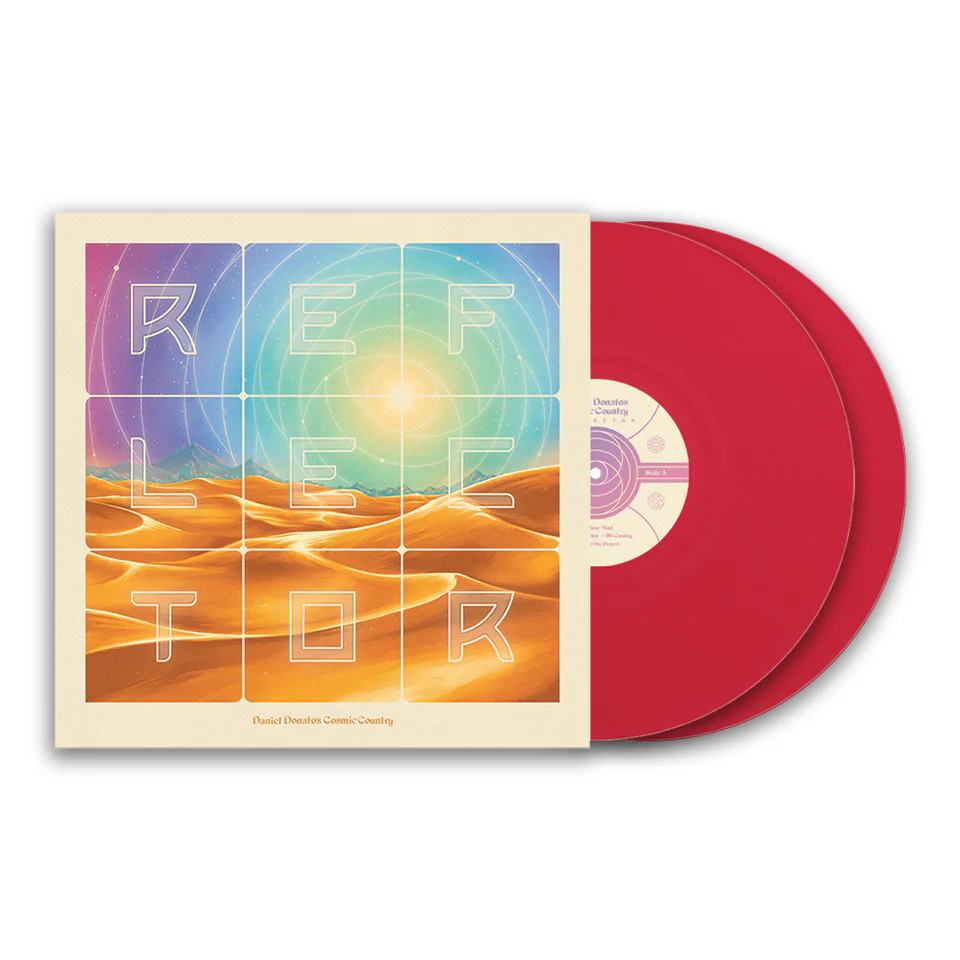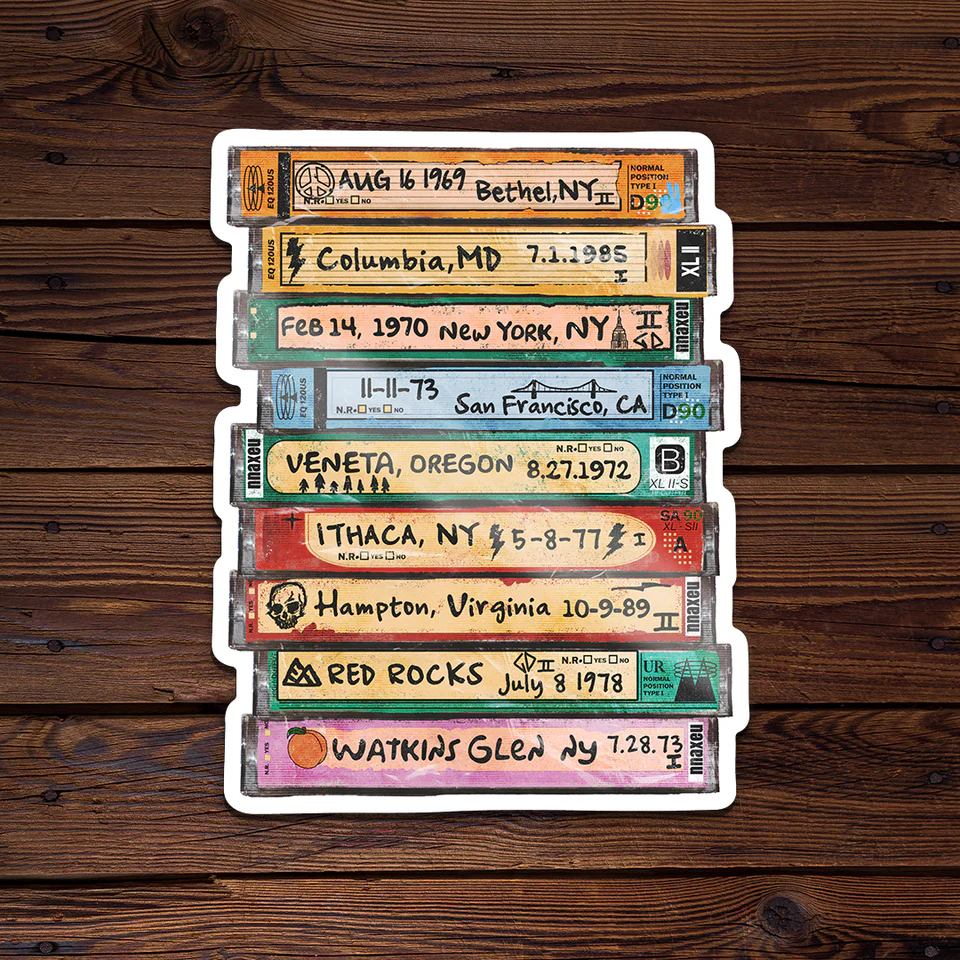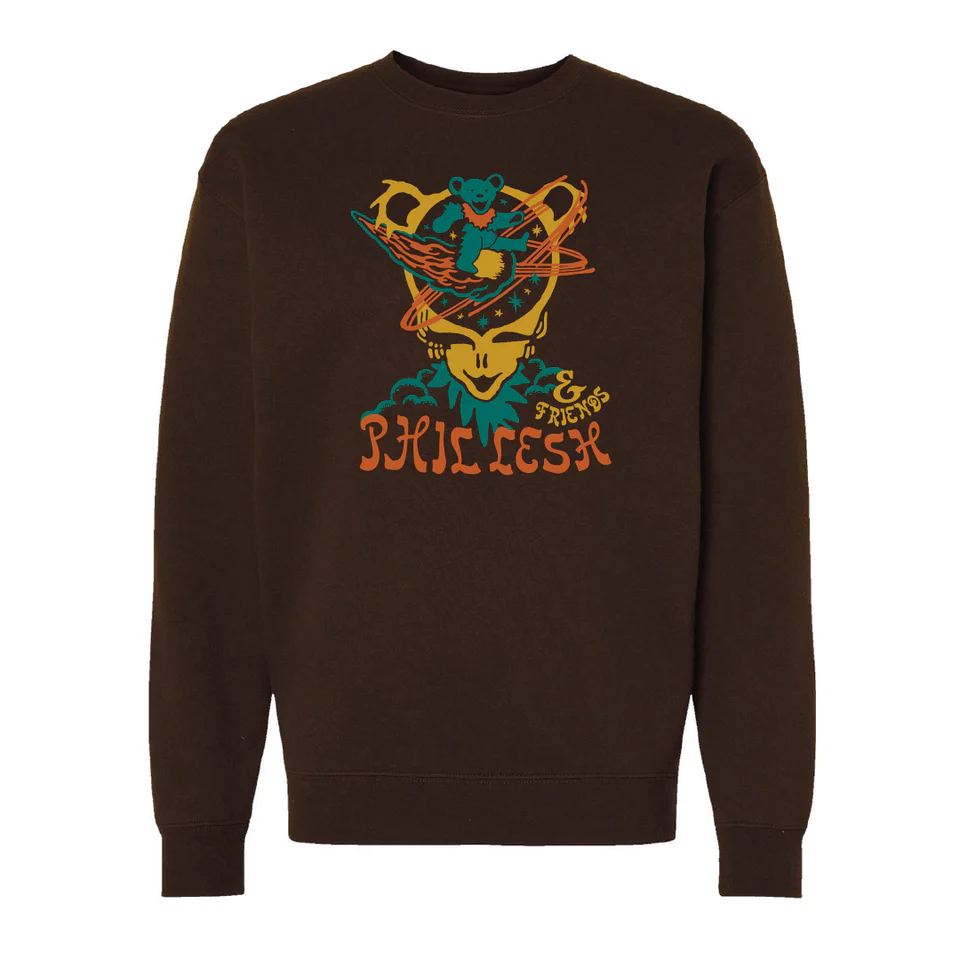Tracking The Journey: Jack Antonoff on His Grammy-Nominated Studio Expressions and Exuberant Live Statements
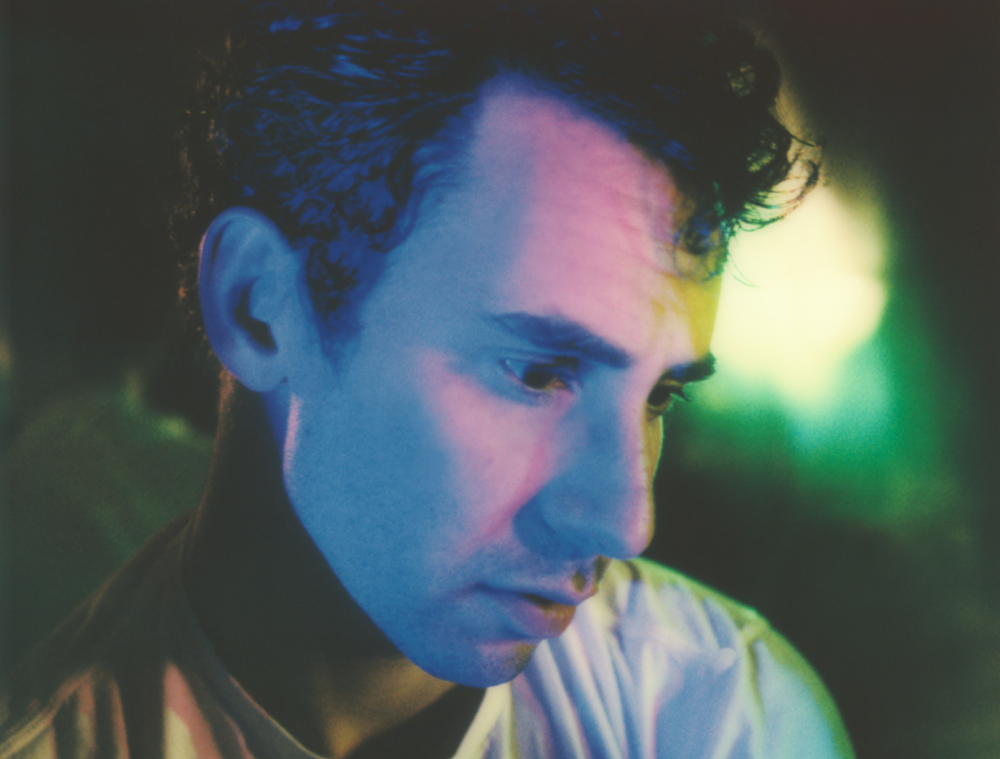
photo credit: Carlotta Kohl
***
Jack Antonoff is both a dynamic live performer and a studio craftsman. Going all the way back to his days in Steel Train through his current performances with Bleachers, he has connected with audiences through his natural blend of ebullience and affability. Yet, as his Grammy nomination for Producer of Year affirms, Antonoff also thrives in a more cloistered, contemplative environment.
The Recording Academy has singled him out this year for this work on a range of albums including Lana Del Ray’s Chemtrails Over the Country Club, St. Vincent’s Daddy’s Home, Lorde’s Solar Power, Clairo’s Sling, as well as the Taylor Swift song “Gold Rush” and the latest Bleachers record Take The Sadness Out Of Saturday Night. In the following conversation, Antonoff discusses the ways that he engages both the studio and live settings and even offers a few riffs on Magic: The Gathering.
Do you think there’s any connective tissue between your production side and your performance side or are they absolutely discrete and independent?
For me, there’s tons of connective tissue because they work off each other. So when I’m in the studio, I’m left with the dream of playing live. However, I don’t believe that the studio is meant to mimic the live experience, where you’re trying to make the record sound just like the show. I think they’re meant to be very different expressions.
I think you could argue that the craft of making albums or writing songs, is the exact opposite of playing live. It’s a solitary process and it’s a protected one. Not to get too deep on this but I would even separate playing live from being on tour. Those are two entirely separate things—the joy of playing live in a sacred environment for your people has absolutely nothing to do with living a life on the road.
But I’ve always loved writing, I’ve always loved producing and I’ve always loved playing and touring. The easiest way to put it is when I’m in the studio, I’m thinking about the show and when I’m in the show, it gives me ideas to go back to the studio. So they kind of ping-pong with each other.
I think the most energetic, interesting recordings are the ones where you hear an artist almost dreaming of playing live. Then on the flip side, when it’s live, it’s sort of one-night-only experience. I don’t care if everyone’s recording on their phone, it’s not gonna live forever in the same way. There’s a power to that. So there’s definitely a connective tissue.
Thinking back, can you recall the first album that resonated with you and set you down your current path?
Pretty much The Beatles started everything for me, except live. Those are my earliest memories from a songwriting production and engineering point of view. The Beatles exploded everything and I got to experience The Beatles in kind of the same way that a lot of people did. My parents told me The Beatles were great, but we didn’t have all the Beatles CDs lying around and there wasn’t streaming back then. So I didn’t hear them all that much. Then, when I was 11 or 12 years old, I made the decision, “Okay I’m gonna do this Beatles thing.” So I went out and slowly started buying the catalog, one at a time, and combing through every song.
From a production and writing point of view, that exploded my head. But then the live aspect for me was all about New Jersey and the punk hardcore scene I was growing up in. Interestingly enough, that led me to the jam scene because there’s an amazing amount of similarity between the two. I think that punk, hardcore, jam and metal are all these deep communities where if you know, you know, and if you don’t, you don’t. That’s when I fell in love with community and playing live.
Steel Train always straddled this fence and I still feel that way. With Bleachers I’m as interested in the live careers of Phish, Widespread Panic, Cannibal Corpse, and Anthrax as I am The National or other bands that you would think I’d be more inclined to be interested in.
A friend of mine who was a college DJ in the late 80s would juxtapose a Grateful Dead song with something from the Minutemen and people would call in death threats. It’s tough to imagine that happening these days because perspectives have changed, I think in large part due to the way that people now receive music via streaming services with wide-ranging playlists, recommendations and easy exposure to new sounds.
This makes me think about this whole idea of whether or not subculture is dead. For a while I thought, subculture was dead because back in the day if I were to tell you, “There’s this scene of people and they drink blood and they listen to music backwards and they meet here,” you’d be like, “What?” You’d just have to dream about it. But now you can look it up immediately.
However, the vastness of being able to look up anything also brings us back to the place we’ve always been. One could argue that you have every song available in your pocket but that’s not really true because you don’t have time to listen to every song. So even if you spend every waking moment in your day checking out artists, songs and albums, you can’t hear most of it, which creates its own version of subculture.
I think there’s connective tissue between metal, jam, rock and even pop in those artists who have fan bases and culture attached to them. It’s really potent in some specific scenes where people carry it a little bit more like a torch, because not everyone knows what it is. But it’s fucking amazing when you see it in mainstream stuff too—when everyone knows an artist but then there’s a whole other subculture to this artist that you could never know unless you’re really in it.
What you describe also harkens back to a time in the pre-streaming era when some music fans would take the initiative to find obscure albums, imports and indie singles at record stores. Putting that much effort into the process made it more of an active experience and had some impact on how the music was received. What’s your perspective on how things have changed, for better and worse?
It makes me search for that feeling in other places. What you’re talking about is something I think about it a lot and the way I phrase it in my head is barrier of entry.
You can remember the immersive experience of going and buying an album where you only have 20 bucks and you’re literally deciding, “Is today the day I get into Zappa or is today the day I get into Joni Mitchell. Or do I get the new My Morning Jacket record because Rolling Stone just described them as the American Radiohead?” You remember these moments.
That barrier of entry has gone and it’s not all bad. A lot of good that came from that. I think everything that’s happened in the world—a lot of tech bros would disagree with me, but I’m positive of this—is just rocketing people back to the show, back to the movie theater, back to the vinyl player.
Even though you can stream anything right now, why are so many people buying vinyl? Because they want to have that experience. Live music is bigger than ever. There are some problems because corporations create a lot of problems, but it’s something really fucking special because no matter how much everyone’s trying to beam a show into someone’s house, whether it’s livestreams or holograms, it’s nowhere near as good as actually being at the show. It’s just pushing us back to the things that have bigger barriers of entry.
Applying some of the ideas about music reception to your work as a producer, when you’re making a record do you consider the context in which that music will be received and by whom?
Without a doubt. You’re human and you can’t not consider it. Then once you have a bigger and bigger audience you really can’t not consider it. But that’s when your job becomes stopping yourself from considering it. When it flashes through your head, you’ve gotta dig deeper and make sure it’s not an active voice.
I assume it’s no different than being good at any job. In my job when I’m writing and producing, there are a lot of voices in my head and I know which ones are trustworthy and which ones are out to get me. It doesn’t mean those voices ever go away, you just know which ones to listen to. I would say that’s the tangible part that you can learn about this job, because there are so many things you can’t learn. So much of it is instinctual but the thing you can learn is which of those voices are your friend and which of those voices hate you.
Thinking back a few years, during the final stages of mixing an album, certain artists and producers would make a point of listening through car stereos, which is how many people would initially experience that music. Do you ever listen through a phone, for instance, which is the modern-day analogue?
There was a time period a couple years ago, when I felt like everyone was listening to stuff on Beats headphones so I used to A/B it on those because they’re very punchy and they really color the low end in a different way. But eventually I stopped because if you think about 10 people in your life, they all have different sound systems and different headphones. Everyone’s just kind of splinted off.
I think the big theme here is that we’ve hit some sort of weird, great equalizer. So my approach and the approach of many people I know is just to make it sound as good as possible. That way, if one person listens on shitty headphones or one person listens on this amazing stereo system or one person has their car all cranked up to sound really weird and bass heavy or high-end heavy, it is what it is.
I would say one example of a voice that’s bad, is one that has you trying to chase how people hear things versus how you hear things.
Your Producer of the Year nomination reflects some recordings from artists you’ve worked with on prior occasions. When you’re making a new album with St. Vincent or Lana Del Ray to what extent do you find yourself in conversation with the previous record?
I find that conversation happens before you have the armor of the thing. So if you make an album with someone and you go make another album with them, the immediate goal is to find new territory. If you don’t find new territory, then you don’t make the album. Finding new territory doesn’t happen when you’re halfway through the album and it doesn’t happen when the album is done. It’s when the album starts.
So if I’m with Annie or Lana, we might be in the studio for a while, but the album doesn’t start until the moment that you say, “Wow, that thing we just did is the thing.”
For example, with Daddy’s Home, we already had made Masseduction with Annie, which is very modular and very harsh. So were messing around in this studio and at some point there was some space in the connection between these dry drums I was playing and this electric sitar she was playing, along with Clavinet and Rhodes, where it all just clicked and it was like, “That’s it, that’s the shit.”
It was the same thing for the Chemtrails record with Lana. We found an approach when we started doing things that were really pulled back and quiet, which was a big pivot from Norman, which was super orchestrated. That was the moment where it was like, “Oh, this is the path.” Sometimes from there the pieces fall in place really quickly and sometimes it’s a really long journey. But that’s really when an album starts. Anything before that is the fucking around phase.
When you’re working with somebody you haven’t previously produced like Clairo, at what point do you prefer to enter the process?
The first time you work with someone, you’re seeing if you can find that magic. It’s a different thing than the process I just described with Annie or Lana where you’re building on something. It’s a little bit more like mania when you’re working with someone the first time because you’re wondering, “Can we do the thing?” You could love someone’s music, love their approach, love where they’re going and still not be able to make it.
So in a process like that, I meet Claire, we talk, we go to the studio for a little bit, we talk more, we’re just sort of like hoping we can do the thing.
Then we booked these sessions at Allaire. I had always loved this place since I’d heard that My Morning Jacket recorded there and David Bowie owned an adjacent mountain. It’s a very magical place.
There was all this manic energy going in like, “Are we gonna be able to do this thing?” because the record doesn’t get finished or come out if you don’t. Then on that first day or two, we got “Bambi.” “Amoeba” and I think half of “Zinnias,” which are three really important songs on the album that define the vision. That’s when it was like, “Holy shit, like we can do it.” That’s a glorious story. And for every glorious story, there’s a tale of it not working.
To what extent does the geographic location of a studio color the sound or vibe in a particular way?
I think it depends on the record you’re making. I think it can be a character that is there if needed. I don’t think it’s imperative. I think people can make great things and fulfill their vision anywhere because I think it’s really coming from inside you. However, if you know “we’re doing this,” then sometimes you’ll say to yourself, “Well, if we’re doing this, then we should be here.”
A perfect example is the vision for the Clairo album. It made sense to be on this far off mountain because the album is meant to sound ethereal and removed, and it sounds like that place. I think with Daddy’s Home Electric Lady was a character on it. The way the album sounds, the kind of tape machines we were using, it needed to be a place like that.
I think that’s there if you need it. There’s a studio in Berlin called Candy Bomber and part of me that wants to make a really sort of aggressive, modular Bleachers album there. I’ve always thought that it would be a character in that album, which is in my head and may never happen.
So I think the studio can be an add-in, a piece of armor to help you figure out the vision.
Thinking back to your point on fan culture, some would say that audiences initially connect with a larger-than-life projection of a given artist. If you think this is true on some level, to what extent do you factor this into the way you present an artist when you’re crafting a studio album?
My view is that the way you’re presenting yourself is almost like a front door to the thing you’re doing, where the goal is to bring people deeper into something beyond the presentation. Rather than a projection of someone, I think it’s more like layers—this is what you think this is and you’re not wrong but there’s another layer and another layer and another one.
So I think about it a little bit more in terms of which layers do you expose at which moments. I mean that literally—track nine is different than track one and it should be. I go back to the house theory where the front door of your house isn’t going to have the craziest collage on it that no one can see from the street. You might paint it one or two colors and put numbers on it, so people can see it. Maybe you want the numbers a little smaller, whatever it is, but you treat your front door different from your basement. You treat your living room different than you treat your attic. An album has an attic, you know.
So I sort of think about it that that way where it’s not necessarily feeding off of the projection of what people think something is, but more about the layers of what gets exposed, always with the goal being the most authentic representation of the work, which is often bigger than the person making it.
Since you mention that track one differs from track nine, what is your approach to sequencing a record in 2021? What role does streaming play in all of this, as well as the ongoing vinyl revival, where track six could lead off side B, where it almost becomes a second track one in certain respects?
That’s all sort of like pie in the sky. That’s one of those voices that isn’t real. I haven’t been around all that long, but my entire fucking career everyone’s been telling me that albums are dying. It’s just not true. They were telling me that with mp3.com, with Napster, with this and that.
We’re at the end of the year and every year is defined by the albums that people loved. There are good songs here and there—there’s nothing wrong with that—but we still live in an album culture. People listen to albums front to back. I don’t care if they listen on vinyl or Spotify, all these things that we’re getting fed are just not true.
Every time we reach another place—maybe the next version is NFTs or maybe it’s TikTok where people are talking about moments of songs, parts of songs, instead of songs or groups of songs or albums. But it’s just not real. The youngest people and the oldest people I know, if they’re music fans, sit and listen to entire albums.
So you could try to game the system—anyone in a five second Google search could learn the data of what’s most popular on Spotify— but why would you even want to be a part of that club?
When I put out “Chinatown,” the label told me I shouldn’t have a fade-out. They said, if you have a fade-out, it doesn’t playlist very well because it gets quiet and people don’t like songs like that on playlists, because it hurts the party. They want it to go, boom, boom, boom right into another song.
At first I was like, “Go fuck yourselves” but then I as thought about it, that actually made total sense. However, I didn’t do a fade-out to be cute. There’s a fade-out on purpose because the song is literally about driving off the George Washington Bridge. You’re supposed to literally drive off into the sunset and create the impression that the song goes on forever but the listener has a moment in time to listen to it. It was an artistic choice. So I took the risk and I said, “Okay, well maybe we’ll get less playlisting, but this is the song.” And everything was fine.
So if you make decisions based on what people tell you like that, you’re gonna be on a road you don’t want to be on. Even if you find success through those kinds of decisions—if you invest in the thing that’s happening in the moment to bolster your career—you’re just gonna get stuck in that moment.
Imagine 10 years ago if I told you that all of a sudden vinyl is gonna start selling like crazy and then every year it will sell more and more to the point where the biggest pop stars in the world couldn’t make enough vinyl. You’d be like, “That’s a joke.”
I think the reason why we keep talking about albums being dead is because artists who make albums are not controlled by their labels. Artists who make singles are very often controlled by their labels. So the people creating this narrative are the people who seek to control those who aren’t album artists.
In sequencing an album I draw on my experience listening to albums. I’ve always listened to them all the way through. That started on CDs and then continued through iTunes and streaming. I also listen to albums all the way through on vinyl. That’s the thing that speaks to me the most.
So my number one guiding force is “What is the journey from track one to the end of this album?” We’re making this for a person who is listening all the way through, because if you make it at the highest level, it’s gonna work on every level. Secondarily, when we’re starting to look at vinyl then we have those conversations about where things fit and does side B work. But mostly it’s about beginning to end, how does this thing feel?
Speaking of “Chinatown,” when you were working with Bruce Springsteen were you tempted to play against expectations of him and his music or did you want to embrace the full-on majesty of the Boss?
It’s a full embrace. I’m from New Jersey and I’ve always recognized this very deep thing in his music. Every artist has this artist in their life.
I love the Beatles more than anything in the world. I love Miles more than anything in the world. Joni Mitchell is my favorite songwriter of all time. But none of these people did for me what Bruce did, which is when I heard Bruce, that was the first time I heard someone tell the stories, make the sounds, describe the landscapes of the place that I know.
That’s a very powerful thing. It made me bold to feel like there’s a spot out there for the corner of the world where I’m from, which also happens to be a very shit on corner of the world.
Bruce is the architect. So if he’ll allow me to play a part in that, I will carry that forever because that’s where I was born and raised. My whole life I lived in New Jersey, played music that sounded to me like New Jersey, was involved in Jersey scenes and it’s the lens through which I see everything. It’s always gonna be present.
So working with him and knowing him is pretty deep. I had no interest in doing anything on that song other than letting him throw it through his filter in every possible way.
You produced the 10-minute version of Taylor Swift’s “All Too Well” with her, a song that hit #1 on the Billboard 100. This certainly runs counter to prevailing industry assumptions about people’s listening habits. What did you make of that?
You’ve gotta love those moments and hold them close. My initial response was to call out everyone in the industry who told me that no one has attention spans anymore.
By the way, the lesson from that isn’t to go make a 10 minute song, the lesson from that is don’t fucking listen to what the industry says. I mean, it happens time and time again.
Can you imagine 20 years ago, someone telling you that trap was gonna be the biggest genre at some point? It’s insane.
It’s like there’s a thing I love that’s happening in the UK right now which has these sort of Lou Reed-esque spoken word verses with super melodic choruses that all these bands are doing. There’s a specific artist named Self Esteem, who I love. So it’s coming hard and that’s not something you would’ve expected X amount of years ago.
Industry predictions on art is an absurd concept and it takes all the joy out of everything. The whole excitement of art and music and live performance and record making is we have no fucking clue what’s gonna happen next.
Jumping to something else, the initial announcement of your Shadow of the City festival included a Magic: The Gathering tournament. I recently spoke with your friend John Darnielle from The Mountain Goats about Magic. Can you share your thoughts on the game?
I’ll link Magic to what I just said, because Magic does a similar thing to me as some of the stuff we’ve been talking about. It is so vast, there are so many combinations, so many options that are completely endless, that literally anything can happen.
I play a lot with my manager and you can make your decks and have an A game and a B game of where you’re going and what it’s designed to do but the combinations are so vast that it’s such a creative process.
I would say that Magic makes games like poker seem like a joke in terms of the levels of skill and chance that go into it. I think it’s the great game of our time that a lot of people miss because of the dragons, angels, goblins and things like that. They can’t hang with that kind of thing. But I’ve been playing for years and I’m just scratching the surface. My manager and I always say that to really get great at magic is a full-time job.
Do you prefer to play a particular format, like standard, or are you a more wide-ranging kitchen-table kind of player?
Before the pandemic, my manager and I would go to card shops and play tournaments. So you kind of slide into whatever format is there but it’s a bit more loose when you’re playing with friends. The thing I’m most proud of recently is I made this angels deck, which is built on a couple big creatures, but mostly lifelink. It’s really fun to play because either you go down in flames or you amass a level of life and a level of terrifying creatures with lifelink working off all the attacking going on. It’s not an ace deck—I wouldn’t bring it to a tournament—but it’s really fun to play with friends because if you like hit your stride, it’s just hilarious.
You know that card Approach of the Second Sun? It’s the one where if you cast it a second time, the game is automatically over. That’s the kind of shit I’m not into. I don’t like creating a deck where there’s one goal. Like my manager has this deck with a Teferi planeswalker. It’s an amazing deck and a great tournament deck but there’s one path. The whole deck is based around getting Teferi out and then working with Teferi. I lose a lot because I’m way more interested in building decks that have three or four potential end games, which is not a winning strategy but it’s way more fun for me.
Circling back to the very first question, you’ve described the special connection between artist and audience in the live setting. Thinking back over your career, is there a particular moment that exemplifies that for you?
The Steel Train Bonnaroo show in 2005, the first time we played Bonnaroo. It was so powerful because when you’re a band like we were at that time, we’d play to 10 kids, 20 kids. Maybe we’d get a big opening show and play to 200. The day before Bonnaroo, we played to 25 people. Then the day after Bonnaroo, we played at place in Arkansas called Sticky Fingers to five people.
Now I don’t know if this still happens because festivals have become very curated, in terms of people knowing exactly where to be and when, but in 2005 if you played Bonnaroo on a Thursday night, there were gonna be 15,000 people there. It didn’t matter if anyone had heard of you. So that was my first taste, like a drug, of being in front of that kind of energy. I have never taken any drugs that have come close to that feeling. It’s something that’s now burned into me.
I don’t necessarily remember how brilliant our set was, but as a band, we were on another fucking level together and we were just riding it.


